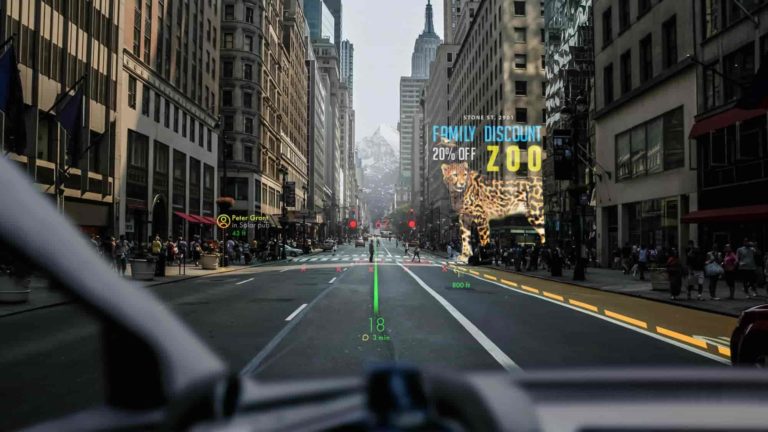
At the turn of a new year, it’s as good a time as any to examine the status and trajectory of spatial computing. When looking across the spatial spectrum, from AR to VR to emerging metaverse developments, where is the value today and where are things headed?
Among all of these elements, the metaverse has the least definition (and most excitement). Though it’s shrouded in ambiguity due to overuse, it has some legitimate principles. And now is the time to discuss them to make sure it’s constructed optimally and responsibly.
Beyond the metaverse, the spatial spectrum continues to see small wins in the rise of AR marketing, enterprise productivity, and consumer VR. Though these areas didn’t achieve the world-changing velocity trumpeted in their circa-2017 hype cycle, they’re progressing nicely.
To break down these topics, our research arm ARtillery Intelligence recently gave a presentation at a virtual event held by Qualcomm. So we’re spotlighting the on-demand version for this week’s XR Talks. Check out the clip below, along with TLDR (or TLDW) summarized takeaways.
Here Today
A common pattern in early-stage tech sectors is to start with an abundance of supply-side excitement and investment, where demand doesn’t align. Then there’s a correction and a shakeout. But that’s then followed by a period of measured growth towards healthy equilibrium.
An example of that is the dot com boom and bust, where the high-flying expectations of online commerce weren’t actually wrong….they were just early. Those expectations and lofty projections were eventually exceeded….but not until several years later in the web 2.0 era.
Why do we bring that up? AR and VR are in mid-stages of that cycle (the metaverse cycle is just starting). It kicked off when Facebook (now Meta) bought Oculus, then hit peak exuberance in late 2016. Then the bubble burst, and now we’re in a period of rebuilding towards equilibrium.
What sectors are leading that charge? Consumer VR is seeing healthy and gradual growth as noted, and as we covered earlier this week. Meanwhile, mobile AR marketing continues to grow at a healthy pace, led by the efforts of Snap, which continues to double down on it.
To put some numbers behind that, ARtillery Intelligence projects mobile AR ad placement revenue to reach $2.9 billion this year. Meanwhile, the hardware base sets the foundation, given an installed base of 3.5 billion devices, 3 billion of which are are AR compatible.
Near Future
Beyond mobile AR, the form factor we’re all waiting for is face-worn. But AR glasses face a design challenge: the tradeoff between wearability and graphical UX. You can have sleek but underwhelming hardware (e.g., Ray Ban Stories), or bulky AR-rich glasses (e.g., Hololens 2).
One way to solve this riddle is to design for the wearability end of the spectrum. Then, the “underwhelming” problem can be counterbalanced by a UX that’s experientially meaningful, if optically underpowered. That could be the name of the game for near-term AR glasses.
If anyone can pull that off, it’s likely Apple. Not only is it rumored to be working on smart glasses, but “meaningful and underpowered” is sort of its M.O. Those meaningful experiences could come from elegant integrations with your iPhone, Watch, and Airpods (classic Apple lock-in).
Apple is also financially motivated towards that end. Given its size and fiduciary drive, it has to shoot for massive markets. AR glasses are still a small target. But a smart wearable that competes with sunglasses or corrective eyewear could have an Apple Watch-like market size.
So think of “Apple Glass” version 1 like the iPhone 1 in that it will evolve over several generations. It could start with “lite AR” that gains graphical richness over time, as opposed to the inverse path of starting with bulky and graphically rich glasses that slim down over time.
Far Future
Coming full circle to the m-word: metaverse mania has taken over 2021, and its momentum will carry into 2022. But again, it’s been shrouded in ambiguity due to overuse. And like many buzzy areas of investment and attention, it will see a shakeout when the bubble bursts.
That’s not to say that it isn’t a legitimate framework for our connected future. But the lofty visions for its actualization are decades from reality. So when mainstream consumers and tech press don’t see immediate gratification, they’ll move on to other shiny objects (and return in a few years).
Meanwhile, metaverse developments and building blocks will make real strides in AR and VR circles, and in other orbiting sectors. But metaverse mania won’t carry on with the same volume it has in the second half of 2021. You’ll likely see fewer metaverse headlines in USA Today.
We’ll pause there and cue the full video below…






